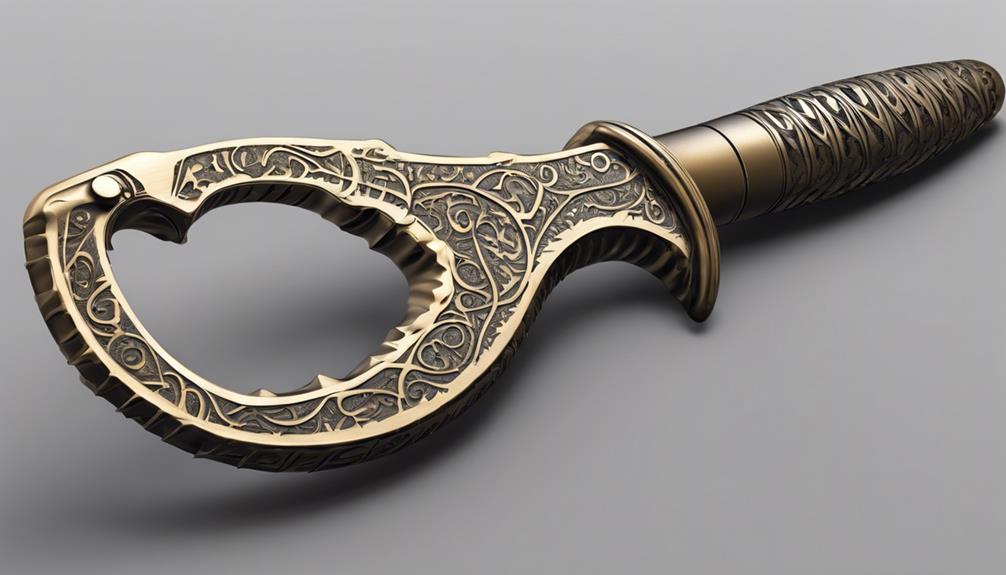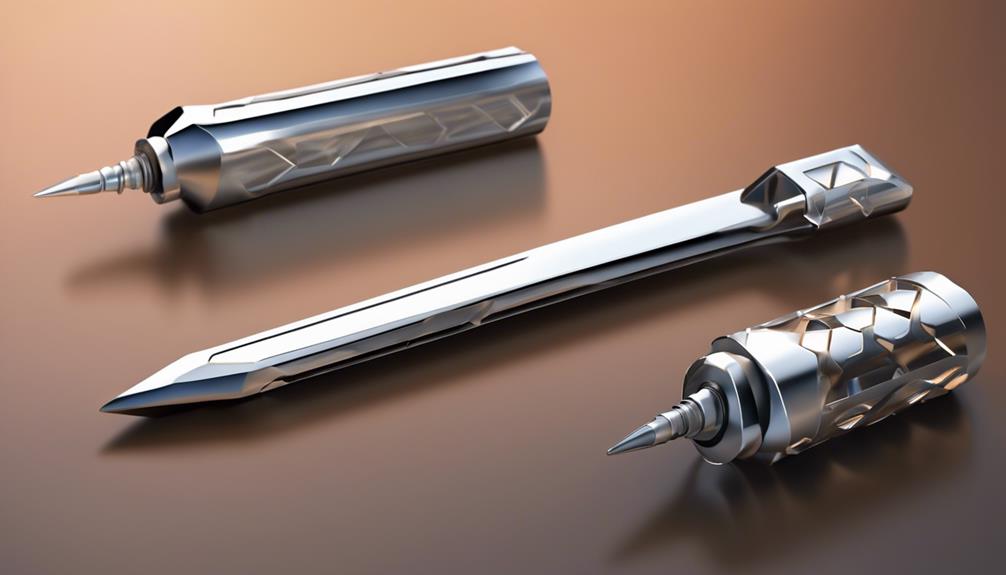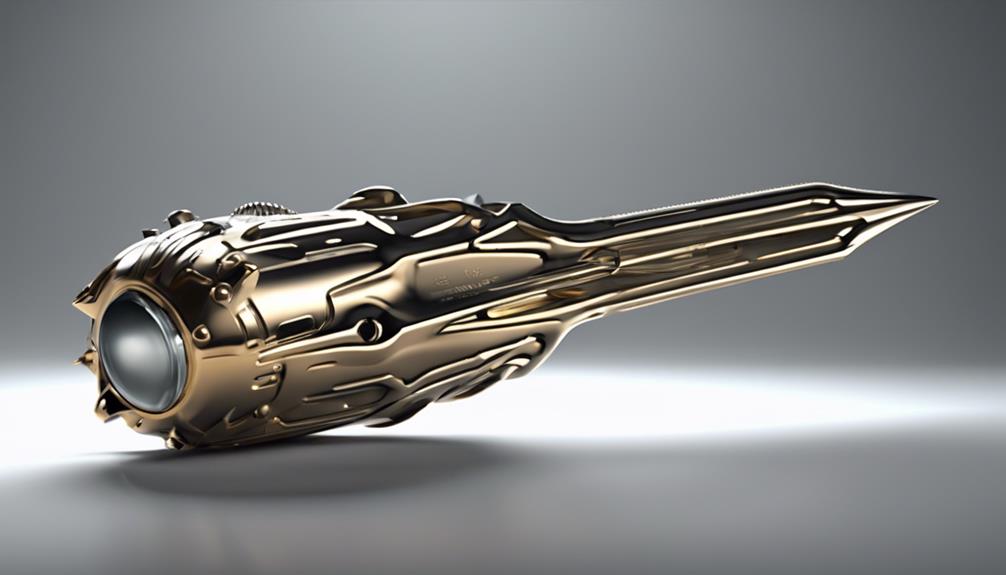Step into a world where artistry meets utility with the awe-inspiring awl, a pointy tool synonymous with unmatched precision and enduring heritage. Embrace the craftsmanship woven into its very essence, a tribute to generations past who wielded it with skill and dedication. Discover how this remarkable tool played pivotal roles in hunting, agriculture, and crafting, shaping human history in profound ways. Its resonance in modern industries showcases its timeless relevance and adaptability, offering a glimpse into a tool that transcends eras and cultures. Uncover the hidden tales and boundless potential that awaits, inviting you on a journey through time and tradition.
Key Takeaways
- The pointy tool that sounds like "awl" is a sharp, tapered tool used for piercing holes in materials.
- It has a rich history in various cultures, from ancient civilizations to modern applications in industries worldwide.
- The awl's versatility spans crafting, leatherworking, bookbinding, and sewing, showcasing its enduring relevance.
- Explore the symbolic significance of the awl in art, craftsmanship, and cultural practices across different societies.
- Discover how the awl continues to innovate and adapt, making a lasting impact on traditional and modern practices.
Unveiling the Mystery

Uncover the intricate details behind the enigmatic nature of the pointy tool that sounds like all. Explore the depths of its origins, revealing the hidden meanings that lie beneath its surface. The tool, with a name reminiscent of a common word, holds a history rich in craftsmanship and tradition.
The origins of this pointy tool can be traced back to ancient civilizations where skilled artisans crafted it with meticulous precision. Each curve and edge, a proof to the dedication and expertise of those who forged it. The hidden meanings behind its design speak of functionality and purpose, blending form and function seamlessly.
As you examine this tool closely, you begin to unravel its mysteries. The intricate patterns etched into its handle tell stories of bygone eras, of hands that once wielded it with care and reverence. The smooth, polished surface reflects a history of use and utility, a tool that has stood the test of time.
In understanding the origins of this pointy tool and the hidden meanings embedded within its design, you gain a newfound appreciation for its craftsmanship. It serves as a confirmation of the importance of tradition and the artistry passed down through generations. Each detail, each curve, a piece of history waiting to be discovered.
Historical Significance
Explore the annals of history to uncover the profound significance of this revered pointy tool that echoes through the ages. The evolution of this tool can be traced back to ancient civilizations where it played a pivotal role in shaping societies. Initially crafted from rudimentary materials like stone and bone, its design gradually evolved, incorporating metal elements for increased durability and effectiveness.
The impact of this pointy tool on history is undeniable. In the hands of early humans, it revolutionized hunting, allowing for more efficient procurement of food and resources. As societies advanced, its role expanded beyond hunting to include agriculture, construction, and warfare. The ability to till soil, build structures, and defend against enemies marked significant milestones in human development, all made possible by this versatile tool.
Throughout history, this pointy tool has left an indelible mark on civilizations worldwide. From the ancient Egyptians constructing monumental pyramids to medieval knights wielding it in battle, its presence resonates across time. The intricate craftsmanship and ingenuity behind its design showcase the innovative spirit of humanity, driving progress and innovation for generations to come.
As you investigate the historical significance of this pointy tool, you witness its transformative power unfold, shaping the course of history and leaving an enduring legacy that continues to influence modern society.
Modern Applications

How have contemporary advancements leveraged the timeless utility of this revered pointy tool? In today's fast-paced world, innovative technologies have revolutionized the practical uses of this tool, offering creative solutions that enhance the user experience like never before. The versatility of this tool has found new life in various modern applications, catering to a wide range of industries and activities.
One notable example of the modern applications of this pointy tool can be seen in the table below, highlighting its adaptability and relevance in different fields:
| Practical Uses | Innovative Technologies |
|---|---|
| Crafting and DIY Projects | Laser Precision Cutting |
| Medical Procedures | Microscopic Manipulation |
| Architecture and Design | 3D Printing |
| Culinary Arts | Precision Slicing |
| Electronics Manufacturing | Surface Mount Technology |
In each of these areas, the integration of innovative technologies has not only streamlined processes but also improved accuracy and efficiency. Whether it's the intricate cuts in crafting or the precise incisions in medical procedures, the creative solutions enabled by these advancements have elevated the user experience to new heights. As we continue to push the boundaries of what is possible, the pointy tool remains a timeless companion, adapting to the demands of the modern world with grace and precision.
Cultural Connections
In various cultures around the world, the pointy tool has woven intricate connections, serving as a symbol of craftsmanship and tradition. Its presence transcends borders, carrying with it a rich tapestry of global influences.
From the delicate carvings of Japanese woodworking to the vibrant textiles of South America, the pointy tool has been a companion to artisans, shaping their artistic interpretations with precision and finesse.
In Japan, the chisel, a quintessential pointy tool, is revered for its role in creating intricate joinery in traditional woodworking. Craftsmen meticulously hone their skills, passing down techniques through generations, each strike of the tool embodying a deep respect for the craft.
Similarly, in Peru, the needle serves as a conduit for artistic expression in the form of colorful embroideries. The pointy tool dances across fabrics, stitching together stories of heritage and identity.
As cultures intertwine and traditions blend, the pointy tool continues to bridge gaps, connecting people through shared craftsmanship and artistry. Its versatility knows no bounds, adapting to the nuances of each culture it encounters.
Whether shaping clay in Africa or fashioning metal in Europe, the pointy tool remains a steadfast symbol, a reflection of the enduring power of creativity and tradition.
Future Implications

As we look towards the horizon of tomorrow, the pointy tool stands poised to carve out new pathways of innovation and tradition, blending the old with the new in a harmonious dance of craftsmanship. Ethical considerations play a significant role in the future implications of this tool.
As technology advances, there's an urgent need to guarantee that the use of this tool aligns with ethical standards. It becomes crucial to ponder the impact it may have on the environment, on communities, and on the individuals using it.
Moreover, the future implications extend to the economic impact this tool may have. With technological advancements, the efficiency and precision of the tool increase, potentially altering the economic landscape of craftsmanship and production.
This shift can lead to changes in job markets, skill requirements, and overall economic structures. Societal changes are also on the horizon as this tool evolves. The way people interact with craftsmanship, the value placed on handmade goods, and the cultural significance of traditional methods may undergo transformations.
This tool has the power to bridge generations, preserving heritage while embracing modernity. In addressing the future implications of this pointy tool, one must tread carefully, mindful of the ethical considerations, technological advancements, economic impact, and societal changes it may bring.
Conclusion
To sum up, the pointy tool that sounds like all holds a rich historical significance, with modern applications that continue to shape our world today.
Its cultural connections span across various societies, highlighting its versatility and importance.
As we look towards the future, the implications of this tool are vast and promising, showcasing the enduring impact of craftsmanship and innovation.
